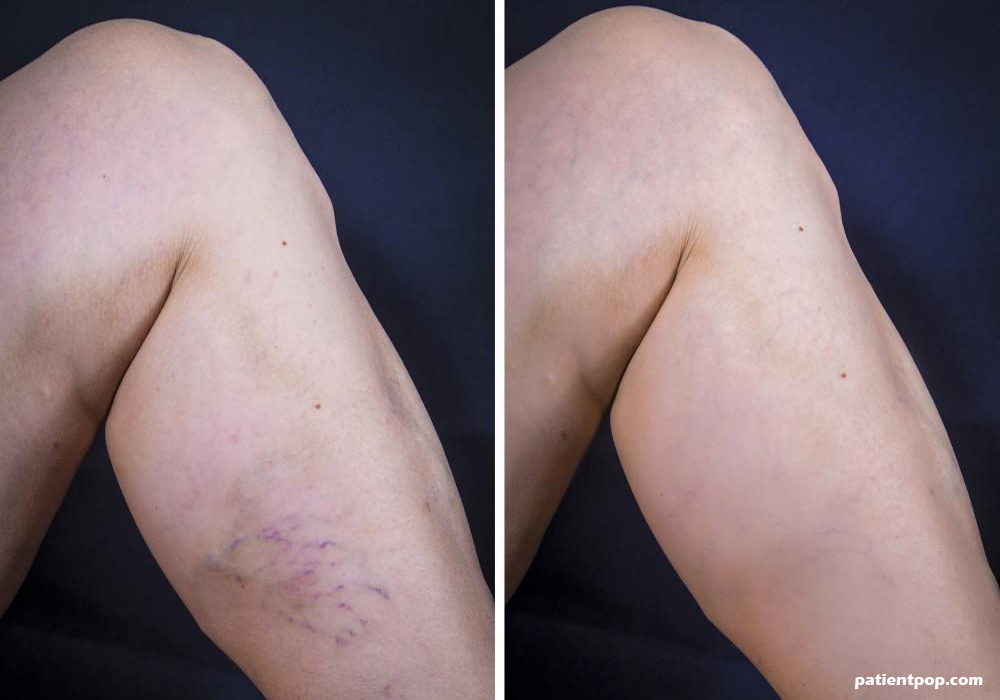
Because varicose veins (VVs) often cause pain and cramps, and also appear unattractive, many people who suffer from them seek treatment. Options for resolving varicosities have expanded in the past, though some measures may be more appropriate than these based on your situation.
This condition is brought on by increased blood pressure levels inside arteries. Once a medical expert has confirmed its diagnosis – typically, by performing an ultrasound – he or she will discuss the top forms of treatment together with you. The goal of this post is to not recommend one approach over another. Instead, we’ll produce an summary of your choices so you’ll be happy to discuss these with your vascular surgeon.
Vein Ligation And Stripping
Ligation involves tying off the target vein. Incisions are produced to your leg higher than the blood vessel, which is then clamped to inhibit the flow of blood. Blood may ultimately be forwarded to other superficial veins inside your legs, leaving the prospective vein to slowly atrophy. As this occurs, its appearance from the surface of your epidermis diminishes pronounced until it disappears. The problem using this approach could be that the volume is high.
Stripping is a lot more invasive. Here again, two incisions are made across the target vein. It is then clamped and removed. While it really is effective for resolving the varicosity, you’ll find less invasive approaches that could accomplish exactly the same goal.
Ambulatory Phlebectomy
This method is similar to vein stripping in this the varicose vein is taken away. One of the key differences would be that the incisions made are tiny; the circulation system is collapsed and withdrawn through them. The incisions are really small that stitches usually are unnecessary. Also, while stripping is done under general anesthesia, an ambulatory phlebectomy only uses a local anesthetic.
Vein Ablation
This approach is done with a catheter. An incision is made near the mark vein, as well as the catheter is inserted through it. The instrument is equipped with electrodes that heat the blood vessel concise that it must be destroyed. As a result, blood will probably be struggling to pass with the vein, and will probably be directed through others. The destroyed circulation system is left in the leg, where it can be gradually absorbed.
Sclerotherapy
Smaller spider veins can usually be treated with sclerotherapy. With this method, a medical expert injects the prospective circulation system having a chemical that irritates its inner wall. The vein becomes inflamed and scarred. As with ablation, the vein will no longer be able to carry blood, and very soon collapses to be absorbed because of your body. Blood that after passed with the collapsed vein is directed elsewhere.
Endovenous Laser Treatment (EVLT)
With EVLT, your surgeon uses a laser fiber to destroy the varicose vein. Here, a tiny incision is created over the blood vessel, as well as the laser fiber is inserted through it. Once it really is set up inside the target vein, the fiber is used to heat the inner wall. This destroys the vein, to cause it to collapse. As with other measures described earlier, the circulation system is eventually absorbed into the body, and disappears.
Endovenous laser treatments is among the easiest and quickest treatments methods employed by vascular surgeons. In most cases, the complete process could be finished in below one hour. There is rarely discomfort or pain following procedure.
Compression Stockings
This is truly the first option most doctors will recommend in treating blue veins. Depending on the severity of the varicosities, stockings could be sufficient for resolving the problem. They are normally worn around the lower calf (i.e. in the ankle to only below the knee), and apply pressure in a graduated manner. Pressure is greatest close to the ankle, and lessens since the stocking extends toward the knee.
This could be the least costly type of treatment. Because it does not require surgery, many patients prefer it to more invasive alternatives.
The unattractive appearance and discomfort that typically accompany spider veins can usually be treated. Speak with your doctor regarding an appropriate strategy for your condition.












